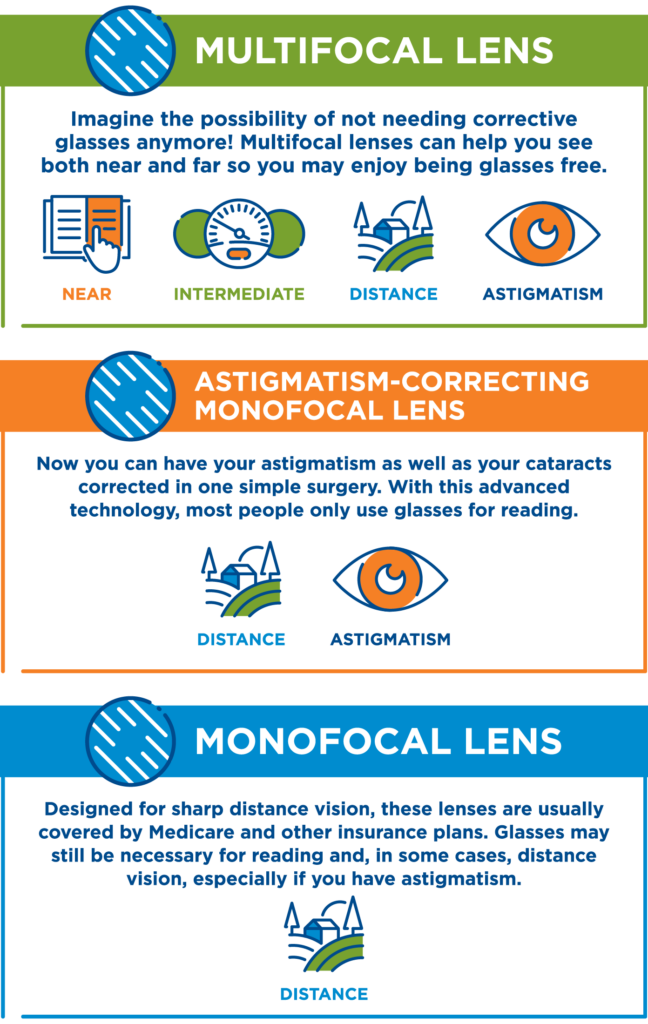Which intraocular lens is right for you?
See What You Are Missing
With the new intraocular lenses (IOLs) available today, many people enjoy the best vision they have ever experienced. In fact, many patients frequently comment after surgery that they wish they had done it sooner! Advanced technology lenses can improve your vision up close, far away and in the middle and may reduce your dependence on glasses. As you and your doctor decide which type of IOL is right for your visual needs and lifestyle, there are several factors to consider.

Multifocal IOLs
Imagine not needing to rely on corrective glasses anymore! Multifocal and extended depth of focus IOLs are designed to help you see near, far and in between with as minimal glasses or contact lens use as possible. Studies show 80-90 percent of patients who have this type of lens do not have to wear glasses post-procedure, with the remaining 10-20 percent needing glasses for distance vision.
Pro: Multifocal and extended depth of focus IOLs offer the best chance to see both near and far without wearing glasses or contact lenses.
Con: This is the most expensive lens choice. Health insurance plans do not cover the additional expense of these lenses. However, when making your decision regarding the type of lens you prefer, compare the one-time cost of purchasing the premium lenses with the cumulative cost of buying eyeglasses or contacts for the rest of your life. Over time, premium lenses may prove to be the most affordable choice.
Astigmatism-Correcting IOLs
Astigmatism is a very common vision condition that causes blurred vision due to the irregular shape of the cornea. Depending on how the cornea is shaped, a toric IOL can be used to correct astigmatism.
Toric lenses are generally used for higher levels of astigmatism, since lower levels can often be corrected with incisions made in the cornea, changing the shape of the eye. These are called limbal relaxing incisions (LRIs) and can be made by hand with a blade or with a laser. Depending on the degree of astigmatism, your surgeon may recommend a toric IOL, LRI or both.
Pro: Toric lenses generally provide clear distance vision. For some people, toric lenses give them the crispest vision of their life.
Con: You will likely need glasses or contact lenses to read. Also, you will likely have to pay an extra fee for either a toric IOL or an LRI.
Monofocal IOLs
Monofocal lenses offer vision at one distance only (far, intermediate or near). The doctor will help decide whether it’s most important for a patient to see up close, mid-range or at a distance without glasses. If the patient chooses the distance option, glasses will likely still be required for reading and computer work.
Pro: Monofocal IOLs are the least expensive lenses, and Medicare or health insurance usually covers the cost.
Con: If you have astigmatism and choose a monofocal lens, you may still need to wear glasses all the time.